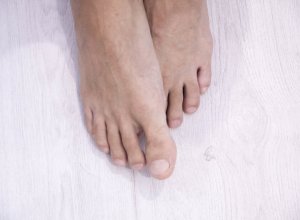
Digital Clubbing
Digital clubbing, also called nail clubbing, is a deformity of the nails characterized by a severe round shape of the nail. In essence, digital clubbing causes a person’s fingernails or toenails to take on the shape of large, flat, wide circles. It is the result of bulbous, uniform swelling of the soft tissue of the terminal phalanx of a finger or toe that eliminates the normal angle between the nail and the nail bed.
Common Causes Of Digital Clubbing
Though nail clubbing can occasionally occur for no obvious reason or be congenital (meaning it is present at birth), most cases of the nail deformity are associated with various heart and lung diseases. Some of the conditions that have been linked to distal clubbing of the nails include:
Pulmonary Issues
- Lung cancer
- Tuberculosis
- Interstitial lung disease (fibrosing alveolitis, for example)
- Suppurative lung disease (empyema, bronchiectasis, cystic fibrosis)
- Mesothelioma of the pleura
- Arteriovenous fistula or malformation
Heart Issues
- Congenital cyanotic heart disease
- Subacute bacterial endocarditis
- Atrial myxoma
- Any disease causing chronic hypoxia
- Tetralogy of Fallot
Other Issues
- Crohn’s disease
- Celiac disease
- Cirrhosis
- Heptopulmonary syndrome (a complication of cirrhosis)
- Graves’ disease
- Overactive thyroid gland
Familial Clubbing Or “Pseudoclubbing”
Sometimes a person’s family background will create the appearance of digital clubbing, but that person may not have a clinical nail deformity. People of African descent often have very round nails that are larger than the width of the corresponding finger or toe. This is called pseudoclubbing and is generally not something that needs to be worried about.
Diagnosis of Nail Clubbing
If you suspect you have digital clubbing, your doctor will examine your fingernails and toenails for apparent signs of digital clubbing. He or she will also look into your medical history and will perhaps run new tests with particular attention paid to the lungs, heart and gastrointestinal tract — all areas associated with diseases that lead to nail clubbing. Additional studies such as a chest X-ray or Echocardiogram may also be performed.
Nail clubbing often happens in stages. The first sign is usually characterized by a softening of the nail bed and the skin next to the nail becoming shiny. The second is the nail beginning to curve more than normal when looked at from the side (called the Scarmouth’s sign), and the third sign is the ends of the fingers and toes may become larger (called drumstick fingers or drumstick toes).
In extreme cases of finger clubbing, extra bones might begin to form on the joints. This is called hypertrophic pulmonary osteoarthropathy (HPOA).
Treatment Of Clubbing
Unfortunately, there is no treatment for digital clubbing. However, your doctor may be able to treat the underlying cause of the nail deformity so the condition does not get worse or lead to HPOA.
Notice concerning medical entries:
Articles having medical content shall serve exclusively for the purpose of general information. Such articles are not suitable for any (self-) diagnosis and treatment of individual illnesses and medical indications. In particular, they cannot substitute for the examination, advice, or treatment by a licensed physician or pharmacist. No replies to any individual questions shall be effected through the articles.






